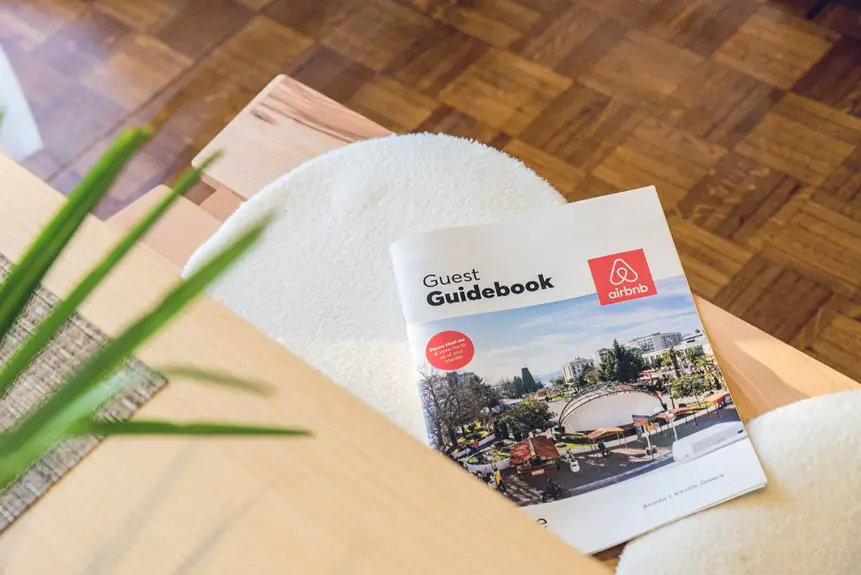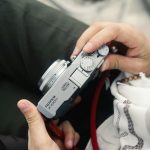You can build a professional photography scrim on a budget by first gathering PVC pipes, connectors, and a light-diffusing fabric like muslin or nylon. Cut and assemble the frame using elbow joints, then stretch your fabric tautly across the frame, securing it with clamps or zip ties. Position your scrim between your light source and subject for soft, even lighting. Keep it clean and store it properly to last longer. With a little care, you’ll master its use and maintenance for great results.
Table of Contents
Key Takeaways
- Use affordable PVC pipes and connectors to create a lightweight, sturdy rectangular frame approximately 3×4 feet in size.
- Choose budget-friendly fabrics like muslin or cotton for effective light diffusion and easy handling.
- Cut pipes to size, assemble with elbow and T-shaped joints, and reinforce corners for frame stability.
- Attach fabric tautly using strong clamps or zip ties to ensure smooth, wrinkle-free diffusion surface.
- Position scrim between light source and subject, adjusting distance and angle for optimal soft lighting effects.
Understanding the Purpose of a Photography Scrim
A photography scrim softens and diffuses light, helping you control harsh shadows and highlights in your shots.
When you use a scrim, you’re fundamentally spreading out the light source, making it less intense and more even. This creates a flattering, natural look on your subject by reducing contrast and preventing blown-out highlights or deep shadows.
You’ll find it particularly useful when shooting outdoors in bright sunlight or indoors with strong artificial lights. A scrim allows you to shape the light’s quality and direction without needing expensive equipment.
Essential Materials Needed for Your DIY Scrim
Before you start building your photography scrim, gather a few key materials that won’t break the bank but will deliver effective results.
You’ll need PVC pipes or lightweight metal tubing to create a sturdy frame, as these materials are affordable and easy to work with. Grab corner connectors or elbow joints to assemble the frame securely.
For fastening, pick up some strong clamps or zip ties to hold the fabric taut. Don’t forget a utility knife or scissors for cutting pipes and fabric. Additionally, have measuring tape and a marker on hand for precise dimensions.
Finally, consider using binder clips or Velcro strips to attach the fabric to the frame neatly. With these essentials, you’re ready to build a functional, budget-friendly scrim.
Choosing the Right Fabric for Optimal Light Diffusion
You’ll want to pick a fabric that balances durability with excellent light diffusion, like muslin or nylon.
Each material offers different levels of softness and transparency, affecting how your light spreads across the scene.
Understanding these qualities helps you create a scrim that shapes light just the way you need.
Fabric Types Overview
Choosing the right fabric plays an essential role in how effectively your scrim diffuses light. You’ll want a material that balances durability, weight, and translucency to suit your shooting needs. Here’s a quick overview of common fabric options to help you decide:
| Fabric Type | Feel & Weight | Ideal Use Case |
|---|---|---|
| Muslin | Soft, medium weight | Versatile, budget-friendly |
| Nylon | Lightweight, smooth | Travel-friendly, outdoor |
| Polyester | Durable, slightly stiff | Long-term, studio use |
| Silk | Delicate, lightweight | High-end, soft diffusion |
| Cotton | Natural, breathable | Eco-friendly, indoor |
Selecting the right fabric sets your scrim up for success, making your lighting effortless and professional every time.
Light Diffusion Qualities
Although selecting the right fabric type is essential, understanding its light diffusion qualities can make all the difference in your final images.
You want a material that softens harsh light evenly without causing unwanted color shifts or hotspots. Fabrics like nylon or polyester with a tight weave work well because they scatter light smoothly and maintain color neutrality.
Avoid materials that are too thick, as they block too much light, or too thin, which can create uneven diffusion. Test samples by shining a flashlight through the fabric to see how the light spreads.
Constructing the Frame: Step-by-Step Instructions
Building the frame for your photography scrim starts with gathering a few essential materials like PVC pipes, connectors, and a cutting tool.
First, measure and cut the PVC pipes to your desired scrim size, typically around 3×4 feet. Use a fine-toothed saw or PVC cutter for clean edges.
Next, assemble the frame by connecting the pipes with elbow and T-shaped connectors, ensuring a sturdy rectangular structure. Press each pipe firmly into its connector for a tight fit.
If needed, reinforce corners with extra connectors for added stability.
Finally, check the frame for squareness by measuring diagonals; adjust if necessary. Your lightweight, portable frame is now ready for the next step—attaching the diffusion fabric securely.
Attaching the Fabric to the Frame Securely
You’ll want to pick the right materials to attach your fabric firmly to the frame without damaging it.
Keeping the fabric tight guarantees even diffusion and prevents sagging during shoots.
Let’s explore how to secure the fabric properly and stop it from slipping over time.
Choosing Attachment Materials
Selecting the right attachment materials is key to keeping your scrim fabric taut and secure on the frame. You want materials that are strong, easy to work with, and won’t damage your fabric.
Choose wisely to guarantee durability and ease of assembly.
Here are three popular attachment options:
- Velcro strips: Simple to apply and remove, providing flexibility and a clean look.
- Spring clamps: Offer a firm grip without piercing the fabric, perfect for quick setups.
- Bungee cords: Stretchy and strong, they keep fabric tight while allowing some give during adjustments.
Each option has its benefits, so pick what fits your budget and setup style.
Avoid anything sharp or adhesive that might leave marks or weaken the fabric over time.
Securing Fabric Tension
After choosing your attachment materials, the next step is to secure the fabric tightly to the frame.
Start by laying the fabric flat over the frame, guaranteeing it covers all edges evenly. Use clamps or clips to hold one side initially, then move to the opposite side. Pull the fabric taut as you attach it, preventing wrinkles or sagging.
Work your way around the frame, alternating sides to maintain even tension. If you’re using bungee cords or elastic bands, loop them securely around both the fabric edge and frame, stretching them just enough to keep the fabric firm.
Check the tension frequently; the fabric should feel tight but not stretched to the point of distortion. Proper tension guarantees consistent light diffusion and a professional look for your scrim.
Preventing Fabric Slippage
Though securing fabric tension is essential, preventing the fabric from slipping off the frame is equally important to maintain a smooth surface. You want your scrim fabric to stay put during shoots without shifting or sagging.
To achieve this, focus on how you attach the fabric securely. Here are three effective methods you can use:
- Use strong clips or clamps designed for photography to grip the fabric edges firmly.
- Sew or attach Velcro strips along the frame and fabric edges for a tight hold.
- Wrap bungee cords or elastic bands around the frame and fabric, adding extra tension to keep the material in place.
Tips for Using Your Scrim Effectively During Shoots
When you use your scrim during shoots, positioning it correctly can make all the difference in softening harsh light and reducing shadows.
Place the scrim between your light source and subject, adjusting its distance to control light diffusion—closer for softer light, farther for more defined shadows. Use clamps or stands to secure the scrim firmly, preventing movement during the shoot.
Position your scrim between light and subject, adjusting distance to soften light and secure it firmly for stability.
Experiment with angles; tilting the scrim can change light direction and quality. Remember to check your camera’s exposure settings after adding the scrim—it often requires adjustments due to reduced light intensity.
Finally, combine your scrim with reflectors or additional light modifiers to balance light and achieve the desired mood. By mastering these techniques, you’ll enhance your images’ professional quality effortlessly.
Maintenance and Storage for Longevity of Your Scrim
Keeping your scrim in top shape guarantees it continues to soften light effectively during shoots. Proper maintenance and storage extend its lifespan and guarantee consistent performance.
After each use, clean your scrim gently to remove dust or smudges. Avoid harsh chemicals that could damage the fabric. When storing, keep it in a dry, cool place away from direct sunlight to prevent fading or warping. Fold or roll it carefully to avoid creases or tears.
Here are key tips for maintaining your scrim:
- Clean with a soft brush or lint roller to remove debris.
- Store in a breathable bag or case to protect from dust and moisture.
- Inspect regularly for damage and repair small tears promptly.
Frequently Asked Questions
Can I Use a Photography Scrim Outdoors in Windy Conditions?
Did you know 70% of outdoor shoots face wind challenges? You can use a scrim outdoors, but you’ll need sturdy clamps and weights to keep it steady. Don’t let the wind ruin your perfect shot!
How Do I Troubleshoot Uneven Light Diffusion From My Scrim?
You’ll want to check if your scrim’s fabric is taut and evenly stretched. Adjust its angle to the light source, remove wrinkles, and guarantee consistent distance. These steps help fix uneven light diffusion effectively.
What Are Creative Alternatives to Scrims for Light Diffusion?
Imagine sunlight filtering through lace curtains—soft, diffused light. You can achieve this effect using sheer fabrics, frosted shower curtains, or even white bedsheets. These budget-friendly alternatives soften harsh light beautifully without a scrim.
Can a Scrim Be Used With Studio Strobes and Natural Light Simultaneously?
Yes, you can use a scrim with studio strobes and natural light simultaneously. It helps diffuse both light sources evenly, giving you softer shadows and balanced lighting for more professional-looking photos.
How Do I Safely Transport a Large DIY Scrim to Location Shoots?
Wondering how to safely transport your large DIY scrim? You’ll want to disassemble it carefully, use a sturdy carrying case or bag, and secure all parts with straps or padding to avoid damage during transit.
- Jute Fabric Sofa Designs: Inspiration for Your Living Room - June 29, 2025
- Jute Fabric Sofa Designs: Inspiration for Your Living Room - June 29, 2025
- Jute Fabric Sofa Designs: Inspiration for Your Living Room - June 29, 2025







